FISHING GEARS

Trawls
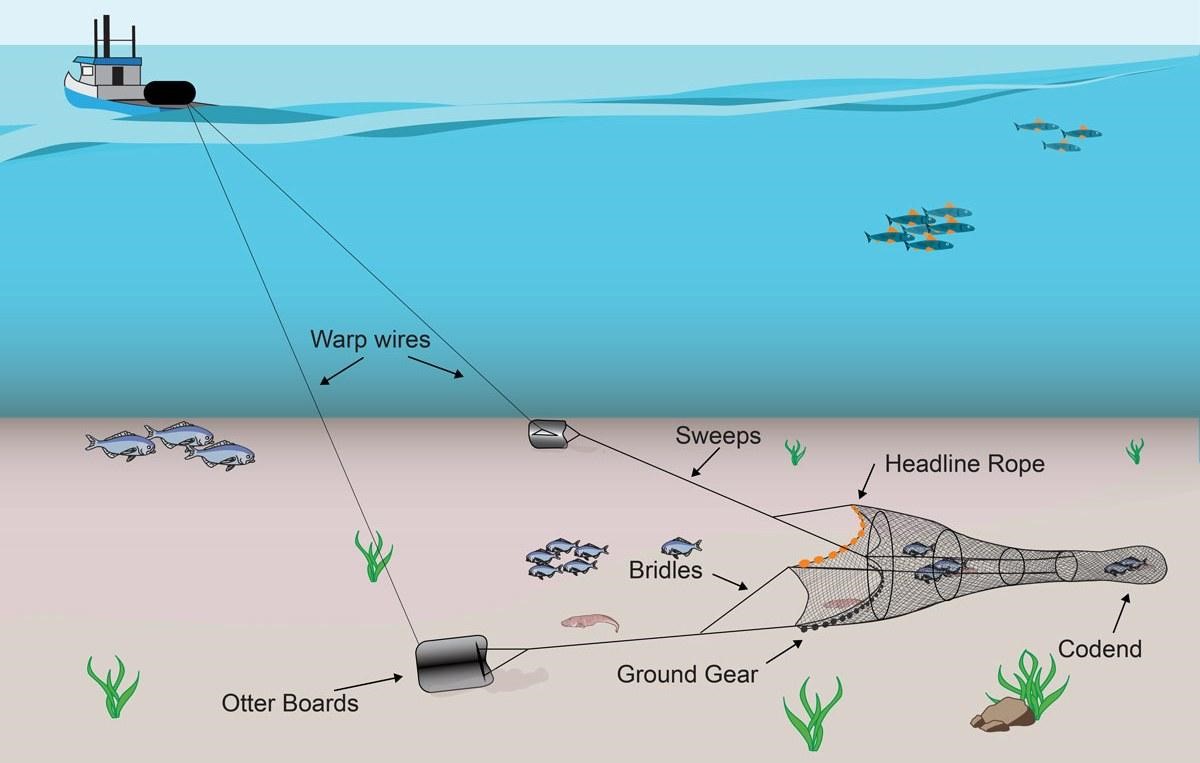
Trawl is a conical bag shaped gear which is dragged through the water either at the bottom or subsurface water. The opening of the mouth region of the net is maintained with the help of floats on the head rope and sinkers in the foot rope and otter boards to maintain the horizontal opening. It accounts for more than 20 % of world marine catch. In India trawls are operated by more than 65 % of mechanized boats and they contribute substantially to the total marine catch. Trawl can be operated either from the side or stern. Based on the position in water column where they are operated, trawls are classified into bottom trawl and midwater trawl. Based on the mouth opening of the trawl they are grouped into beam trawl, otter trawl, bull trawl. Based on the number of trawls operated from a single vessel, there are double rig trawl, triple rig trawl and quad rig trawl. Some of the recent innovations in trawl net designs are use of large mesh trawls in the fore parts of the net which minimize drag and hence fuel requirements.
Seine nets
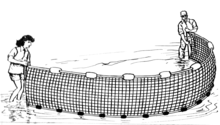
Seine net is a long wall of netting with our without a bag, supported by floats and sinkers, which are operated by ropes attached to the end of the wings which are used for hauling and herding the fish. They are usually operated in the coastal or shallow waters where bottom and surface act as natural barriers. Seines operated from a boat are called boat seines eg. Danish seine. Seines operated from shore are called shore seine or beach seine eg. Rampani nets operated in south west coast of India.
Purse seines
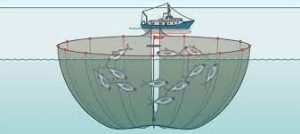
Purse seining is the efficient fishing method for the capture of shoaling fishes. Purse seines evolved from beach seines in 1920s with the incorporation of a purse ring to facilitate closing of the bottom of the net and thus make it possible to operate in deeper waters. They are roughly rectangular walls of netting rigged with floats on the head rope and sinkers in the foot rope. They are the predominant type of surrounding nets. The bottom of the net is closed after encircling the fish shoal by a purse line which prevents fish from escaping downwards by diving. They are generally classified based on the scale of operations (small scale, medium scale and large scale); based on the number of vessels used (one boat purse seine and two boat purse seine); based on method of operation (Surface and sinking purse seine) and based on target species (anchovy, sardine, tuna, mackerel etc).
Gill nets trammel nets and entangling nets
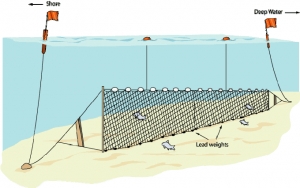
They are vertical walls of netting kept erect in water column by means of floats and sinkers and set perpendicular to the direction of movement of target fish. Depending on the method of operation gill nets are classified into drift gill nets, set gill nets and encircling gill nets. Based on the structure, there are simple gill nets and multi layered netting called trammel nets. Entangling nets are loosely hung and catch is entangled in the net.
Hooks and lines
Lines are used both by the traditional and modern fisheries sector. Line fishing is basically composed of line and hook. The most important types of hooks and lines are pole and line popular in Lakshadweep islands, jig line for squids using lights, and troll lines for predatory fishes. Hand lines and long lines are also widely used. Tuna long line is a very important example for a long line gear. The fish are enticed to artificial or natural baits on the hooks and are finally caught.
Traps

Traps are enclosures to which the fish are lured and once they enter the trap are unable to escape.
Pound nets
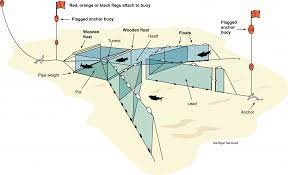
Pound nets are stationary uncovered nets mainly seen in Japan. These are fixed in stakes; a leader net is kept at an appropriate angle to the swimming direction of migrating fish schools so as to guide them to enclosures with retarding devices and closed at the bottom by netting.
Fyke nets
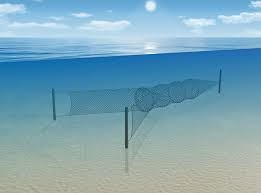
Fyke nets are used in shallow waters. They consist of a cone shaped bag of netting with ring shaped rigid structures to maintain cylindrical shape of the net body and are provided with wings to lead the fishes into the bag. They are fixed to the bottom by stake.
